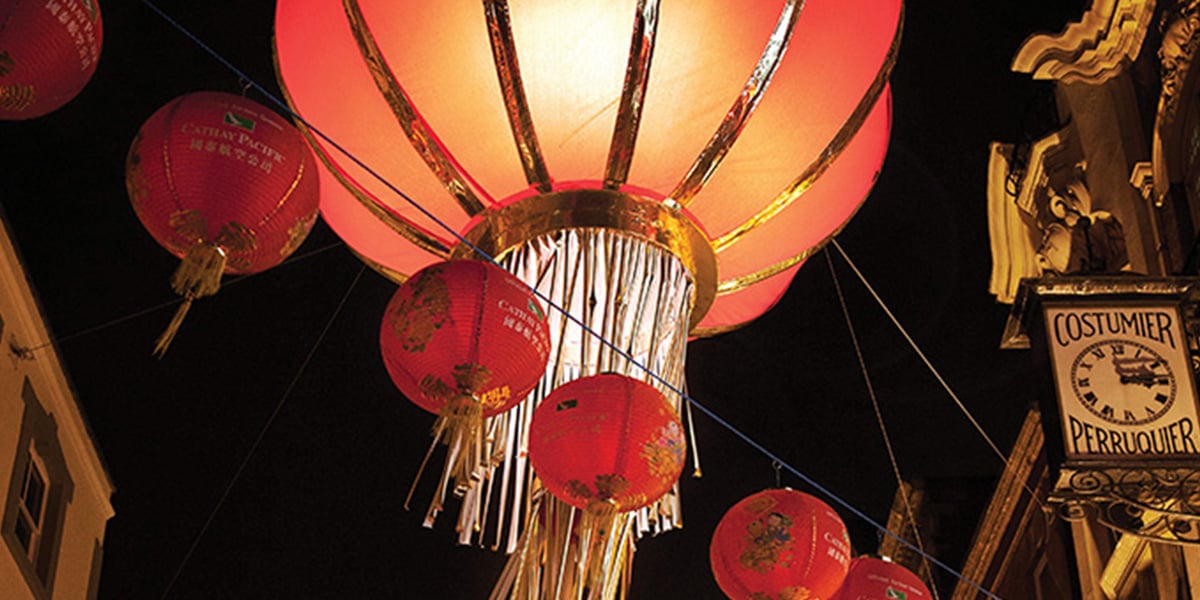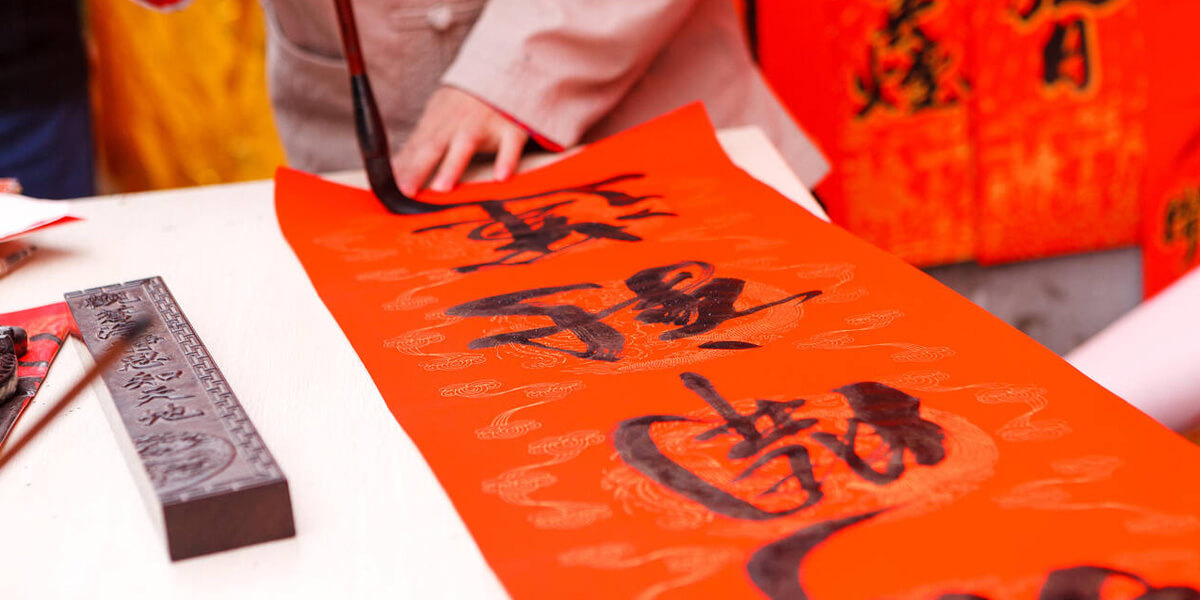Chinese New Year is one of the largest and best-known events in the Chinese lunar calendar. Incorporating blessings, family, traditions and carnival activities, the celebrations extend beyond China and take place throughout Southeast Asia and all around the world, especially in Chinese communities. Unlike in the Western calendar where the new year is a fixed date, the date of the Chinese New Year varies from late January to the middle of February.

During each festival, celebrations focus on family, relatives and loved ones, and although traditions vary by region and country, Chinese New Year customs typically share key elements.
People greet each other with a hearty ‘Xin Nian Kuai Le’ (‘Happy New Year’) in the new year.

Preparations
Before the new year, houses are cleaned from top to bottom; the aim is to sweep out any bad luck from the old year and clear the way for good luck.
People decorate their houses with red lanterns, paper cuttings and paintings.
Another tradition is to compose ‘spring couplets’, featuring positive slogans written in calligraphy on red coloured paper. These are fixed to the front door to replace the ones stuck there the year before. The messages of hope and renewal add to the festive atmosphere and the sense of a fresh start in a new year.
Celebrations
Many use a feast on New Year’s Eve as an opportunity to return to their hometowns and reunite with family over traditional foods such as ‘jiaozi’ – dumplings which contain different fillings and symbolise prosperity because they resemble the ancient shape of gold bars.
The ancient Chinese invented gunpowder. It was called ‘smoke flower’ because it was originally used during the Spring Festival and is still integral to the celebrations. On New Year’s Eve, at midnight, fireworks are lit to herald the arrival of the new year. It is also common to let off firecrackers to ward off evil spirits whilst staying up late to welcome in the new year.
The younger generation celebrates with their elders, wishing them good health and longevity. In return, elders present ornate red packets containing pocket money to the younger generation, wishing them smooth progress in the year ahead.
Festivities
Over the Chinese New Year period, it is customary to visit temple fairs, where visitors enjoy craft stalls and a mix of modern and traditional entertainment, including puppet shows, acrobats and dragon dances which are a key part of the festivities.
Dragon costumes consist of a large head and a tail-like body in sections which are lifted on poles. Of all the parades that take place throughout the New Year period, the Chinese Dragon Parade is the highlight. Customarily performed along with lion dancers, acrobats and martial artists to the sound of drums and horns, the parade ends in a burst of firecrackers.
The New Year celebrations last for 15 days until the full moon. On the final day, a big celebration called the Lantern Festival takes place and children take to the streets in the evening carrying paper lanterns, creating a joyful atmosphere. Chinese lanterns are usually red for good luck and symbolise the reunion of the family. On this day, people also eat traditional food — glutinous rice balls called ‘Tang Yuan’.
